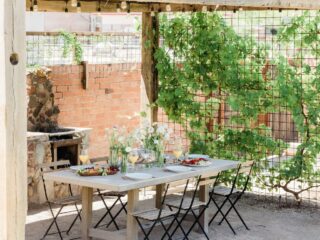
Ranch architecture, known for its wide, open layouts and connection to the outdoors, has evolved significantly from its humble beginnings. Once characterized by simple, practical designs suitable for rural living, ranch homes today embody a spectrum from rustic charm to modern luxury. Vail architects, with their deep understanding of blending tradition with innovation, have been at the forefront of this architectural evolution. This blog explores how ranch architecture seamlessly adapts to both rustic and luxurious styles, demonstrating its remarkable versatility and enduring appeal.
The Roots of Ranch Architecture
Originating in the mid-20th century, ranch-style homes were initially designed for functionality and affordability. With their single-story construction, low-pitched roofs, and extensive floor plans, these homes catered to post-war families seeking comfortable and spacious living environments. The traditional ranch was straightforward, featuring natural materials like wood and stone to complement its surroundings, embodying a rustic aesthetic that appealed to those who preferred a simpler, more grounded lifestyle.
Transition to Modern Luxuries
As architectural tastes and technologies evolved, so did the ranch design. Today’s ranch homes can be as luxurious as any high-end residence, with modifications that include larger windows, open interior spaces, and integration of state-of-the-art technology. These homes now feature sophisticated design elements such as vaulted ceilings, skylights, and custom-designed interiors that elevate the living experience. The shift from basic to luxe is most evident in the high-quality materials and finishes used, such as marble countertops, hardwood flooring, and designer fixtures.
Indoor-Outdoor Living
A defining feature of ranch architecture, whether rustic or luxe, is its emphasis on indoor-outdoor living. Large sliding glass doors and expansive patios blur the line between interior and exterior spaces, making these homes ideal for those who appreciate a connection with nature.

Luxurious ranch homes often include outdoor kitchens, fire pits, and infinity pools, enhancing the outdoor living experience while maintaining the architectural integrity of the ranch style.
Versatility in Design
The adaptability of ranch architecture allows it to fit various landscapes and lifestyles. In rural settings, ranch homes can maintain their rustic charm using traditional materials and simpler designs that resonate with the natural environment. In more urban or upscale locales, ranch homes can adopt a more polished, contemporary look, incorporating modern architectural trends and luxury amenities. This versatility makes ranch architecture appealing across different demographics and geographical locations.
Energy Efficiency and Sustainability
Both rustic and luxurious ranch homes often focus on energy efficiency and sustainability, an appealing aspect for environmentally conscious homeowners. Features like solar panels, energy-efficient appliances, and sustainable building materials are commonly incorporated into the designs. These elements not only reduce the home’s environmental impact but also offer long-term savings on energy costs, adding a practical appeal to the aesthetic and functional benefits of ranch living.
The Appeal of Single-Level Living
The single-level layout of ranch homes offers a practical and accessible living solution, which is particularly appealing as the population ages. Without the need to navigate stairs, these homes are ideal for retirees and those with mobility issues.

Additionally, the expansive nature of ranch floor plans allows for easier customization to meet the specific needs or preferences of residents, further enhancing their appeal.
Cultural and Aesthetic Impact
Ranch architecture has made a significant cultural impact, embodying a spirit of American innovation and simplicity. Its ability to evolve while maintaining its core characteristics exemplifies how traditional forms can adapt to modern needs and preferences. Whether through a rustic design that honors its historical roots or a luxurious interpretation that reflects contemporary desires, ranch homes continue to influence residential architecture significantly.
Conclusion
From rustic to luxe, ranch architecture demonstrates a remarkable ability to adapt and thrive in various settings and styles. Vail architects and others around the world continue to push the boundaries of what these homes can achieve, blending historical elements with modern innovations. As ranch homes evolve, they maintain their position as a beloved choice for homeowners seeking comfort, style, and a seamless connection to the outdoors. Their versatility ensures that ranch architecture will remain a significant and cherished style in the landscape of American homes.





